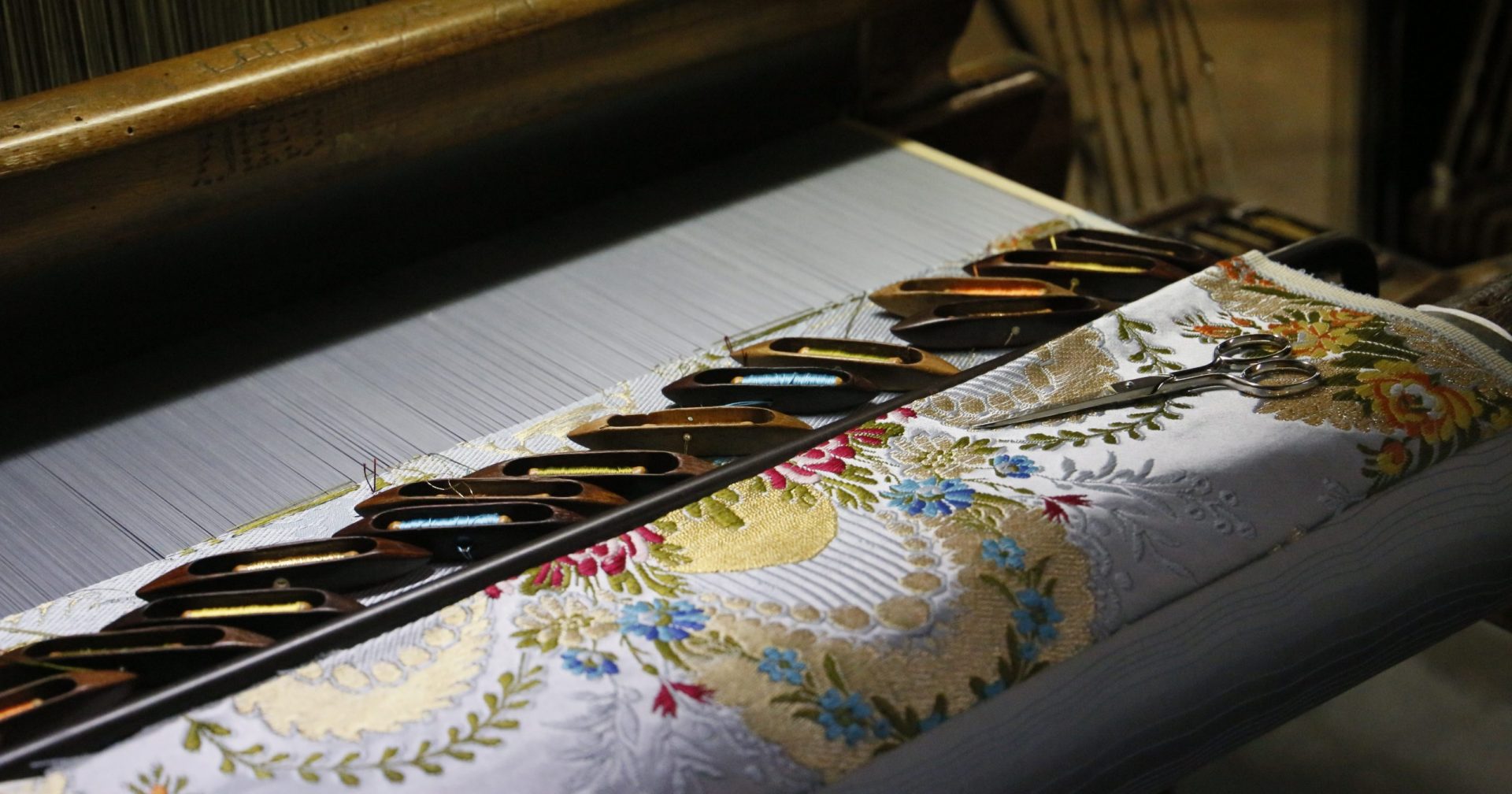This conference is organized by SILKNOW, a research H2020 European funded project, whose principal goals chase the conservation, spreading and protection of silk heritage.

Weaving Europe: Online International Conference on Silk heritage and Digital Technologies
30 November 2020 - 4 December 2020
About the Conference
From flags to canopies, tapestries, furniture, bride clothing, traditional attire, etc., silk is found in countless contexts. Besides, it is also a multifaceted living heritage, because it involves more than the textile itself, around it there are designers, weavers, painters, etc. Although the Silk Road is often associated with its Asian origins, its European ramifications were fundamental for the construction of today’s Europe.
The European Silk Heritage is linked to history, sociology and cultural production. It also underlined as an artistic connection. A fluid exchange that influenced the development of each productive points.
The commercial and cultural connection, liaised Europe for several centuries thanks to the exchange of goods and techniques, but also of ideas, religions, trends, which have been going through the diverse routes and trading ports, leaving traces and influences in each of them, building a common and shared history.
Seats
Workshop
Sponsors
Aims-Goals
The aim of this international conference is to spread today’s research about historic fabrics together with the last technology applied to cultural heritage. The forum would merge professionals from different scopes as museums, tourism, creative industries, innovative hubs, universities, etc. where heritage & technology would be the junction points.
This international conference aims at spreading recent research about historical silk fabrics, together with the latest technology applied to cultural heritage. The forum will merge professionals from different sector, such as museums, tourism, creative industries, innovative hubs, universities, etc. where heritage and technology are a shared interest.
The conference will also foster a collaborative code of practices to promote the defense and safeguarding of textile heritage.
Finally, it also disseminates methodologies on cataloguing and inventorying that will increase the cooperation among institutions, in order to share their data and provide open access to it.
Target Audience
Researchers and professors from the academic area, undergraduate, postgraduate and Ph.D. students; private business related to tourism, creative industries, art crafts and traditional industry; fashion professionals and business-related to the silk industry.
Confirmed Speakers
Weaving Europe. Silk heritage and Digital Technologies Conference is delighted to feature expert lectures from the following keynote speakers.
Subject to Change. For most up to date listing please consult the on-line programme
Study of the evolution of the cultivation of mulberry and the manufacture of silk in Valencia area between the 16h and 18th centuries, focusing especially on the period of greatest splendor that saw the sector in the last century. Identification and analysis of the masters examined by the velvet guild from its foundation in 1479 until the dissolution of the guild corporations in 1836. Study of the process of enrichment and social ascent of the silk artisans who exercised business functions.

Study of the evolution of the cultivation of mulberry and the manufacture of silk in Valencia area between the 16h and 18th centuries, focusing especially on the period of greatest splendor that saw the sector in the last century. Identification and analysis of the masters examined by the velvet guild from its foundation in 1479 until the dissolution of the guild corporations in 1836. Study of the process of enrichment and social ascent of the silk artisans who exercised business functions.


José Luiz has a background in polymer chemistry with focus on cellulosic materials and applications in the area of paper-based heritage conservation. He worked as a conservation scientist at the Cultural Heritage Agency of the Netherlands (1997-2003) and at ICCROM - International Center for the Study of the Preservation and Restoration of Cultural Property (2005-2008). Since 2005, José Luiz has been working internationally in the area of risk management for cultural heritage, contributing to the development of new methodologies and tools, capacity building, research, awareness, advice and dissemination, with several publications on the subject. After 10 years residing in his home country Brazil, José Luiz is back at ICCROM since 2018, where he currently manages the Strategic Planning Unit and a diverse portfolio of projects in the area of heritage collections, conservation, and sustainable development. José Luiz is a member of the editorial board of Restaurator - International Journal for the Preservation of Library and Archival Material.

José Luiz has a background in polymer chemistry with focus on cellulosic materials and applications in the area of paper-based heritage conservation. He worked as a conservation scientist at the Cultural Heritage Agency of the Netherlands (1997-2003) and at ICCROM - International Center for the Study of the Preservation and Restoration of Cultural Property (2005-2008). Since 2005, José Luiz has been working internationally in the area of risk management for cultural heritage, contributing to the development of new methodologies and tools, capacity building, research, awareness, advice and dissemination, with several publications on the subject. After 10 years residing in his home country Brazil, José Luiz is back at ICCROM since 2018, where he currently manages the Strategic Planning Unit and a diverse portfolio of projects in the area of heritage collections, conservation, and sustainable development. José Luiz is a member of the editorial board of Restaurator - International Journal for the Preservation of Library and Archival Material.








Facultad de Economía, Universitat de València

Facultad de Economía, Universitat de València






